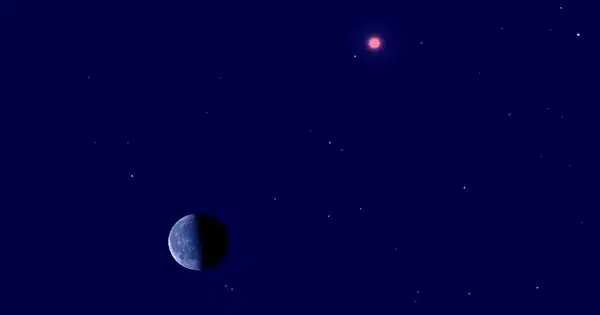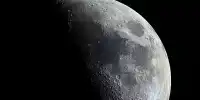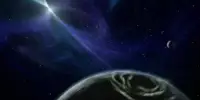In the early morning skies tomorrow, the moon and Jupiter will be clearly visible.
As visible from North America, the gas giant Jupiter and its four bright Galilean moons will pass behind a very thin — only 5% lit — declining crescent moon either before or after daybreak on Wednesday, May 17. This occultation is best observed from the western third of the United States and Canada when it occurs before sunrise. In areas where it occurs in a reasonably dark sky, you may be able to watch Jupiter vanish with no optical aid at all — however binoculars will provide a better view, and a telescope will be required to follow its moons.
The crescent moon’s leading, light limb will initially pass over Jupiter, taking a minute or more to slowly move over the face of the big planet. About an hour or more later, Jupiter will gradually emerge from behind the dark edge of the moon.
Washington, Oregon, much of Idaho, Nevada, Utah, Arizona, New Mexico, northern and eastern California, and the western half of Texas will have the best views of Jupiter’s disappearance behind the moon. Jupiter and the moon will be low to the eastern horizon against a brightening twilight sky in these locations.
Unfortunately, Jupiter will slip behind the moon prior to moonrise in western and southern California; when the moon first appears above the horizon (in areas like San Francisco, Los Angeles, and San Diego), Jupiter will already be behind the moon.
The western half of Oregon, Nevada, Arizona, and all of California are the most favorable regions for the reappearance. Near and along the Pacific coast of the Golden State, the sun will be about eight degrees below the horizon, while the moon will be a similar height above the horizon. It may be rather impressive to see Jupiter emerge from the shadow of the moon’s dark limb in the middle of dusk.
The Galilean satellites can be seen wherever the sun is at least five degrees below the horizon; the sky should still be enough dark to see them with a telescope. Europa will not be visible since it will be in Jupiter’s shadow, but I will be very close to Jupiter’s eastern limb. Callisto and Ganymede will be located to Jupiter’s west. In reality, Jupiter’s appearance is preceded by these two satellites by 11 and 7 minutes, respectively, as seen from California. Because their disks have a significant angular extent, these satellites will “ooze” into view rather than “pop out” like a star.
Problematic visibility farther east: Where Jupiter is occulted in broad daylight — which will be anyplace east of a line roughly running from mid-Montana to central Louisiana — it will be against a dazzling blue sky (if the weather cooperates!). However, this fascinating event may still be seen via your telescope.
The most straightforward way is to identify the moon and Jupiter before sunrise and track them throughout the day. Look towards the horizon, just north of straight east, around 30 to 40 minutes before sunup. That’s where you’ll find the sliver of the moon, with Jupiter a degree or so to its left.
The moon and Jupiter are often higher than the sun and far to its right when the occultation occurs in the early morning. Finding the moon and Jupiter at all will be difficult if your quest is conducted after sunrise. Give yourself plenty of time to complete this in advance. The transparency of the sky, or the intensity of its blue color, will determine a number of things. Generally to the right and, for most places, around 15 degrees higher, aim your scope at the sun at a distance of about 28 degrees (almost three fist-widths at arm’s length).
You can be more precise if you have a “go-to” telescope mount or a telescope with setting circles. However, keep in mind that the crescent moon will have a low surface brightness, making it difficult to differentiate from the sky itself. Sweep over the sky, and once you’ve got the moon, the next task is Jupiter. Not only will it appear much smaller (a sixth of the moon’s diameter), but its surface brightness will be even lower. The moon, on the other hand, will show you exactly where to look.
Here’s the schedule: We thank the International Occultation Timers Association (IOTA) for viewing data from this site, which gives times for 953 different sites within the occultation viewing zone (opens in new tab). All times on this website are in Universal Time (UT). IOTA also gives information on the sun’s and moon’s heights, as well as a map illustrating the visibility region. While the moon will occult Jupiter in the morning for the United States, Canada, and Central America, the event will also occur in the afternoon for northern Europe.
The timetable below shows the local disappearance and reappearance timings for 17 cities in the United States, Canada, and Mexico. If the time is preceded by an asterisk (*), it denotes that the occurrence occurs when the sun is below the local horizon. Dashes for Los Angeles disappearance information show that the moon is below the horizon for this event.














